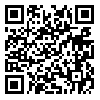Volume 20, Issue 79 (10-2011)
JGUMS 2011, 20(79): 68-76 |
Back to browse issues page
Download citation:
BibTeX | RIS | EndNote | Medlars | ProCite | Reference Manager | RefWorks
Send citation to:



BibTeX | RIS | EndNote | Medlars | ProCite | Reference Manager | RefWorks
Send citation to:
Moeini B, Besharati F, Hazavehei M, Moghimbeigi A. Women’s Attitudes toward Elective Delivery Mode Based on the Theory of Planned Behavior . JGUMS 2011; 20 (79) :68-76
URL: http://journal.gums.ac.ir/article-1-135-en.html
URL: http://journal.gums.ac.ir/article-1-135-en.html
1- Hamedan University of Medical Sciences, Health Sciences Research Center, Faculty of Health, Hamedan University of Medical Sciences, Hamedan, IRAN
2- Hamedan University of Medical Sciences
2- Hamedan University of Medical Sciences
Abstract: (9048 Views)
Abstract Introduction: Cesarean section (CS) delivery is more risky than normal vaginal one for both mothers and neonates. However, due to various reasons, the rate of CS is rising unfortunately. Unawareness and unfounded attitudes are among the more common reasons for this increasing rate of CS. Objective: To survey women’s attitudes toward elective delivery mode based on the Theory of Planned Behavior (TPB) in Rasht, northern Iran. Materials and Methods: This descriptive-analytical study was carried out with 207 women referred to health centers in Rasht, using cluster sampling, in winter 2010. Questionnaires were used to collect the respective data which were analyzed by SPSS-13. Results: Findings showed that 43% of the women have had normal vaginal delivery, 36.2% caesarean section for medical reasons and 20.7% elective cesarean section. In the elective cesarean section group, the mean scores of knowledge, attitude, evaluation result and perceived behavioral control were 42.56, 55.87, 60.33 and 47.28, respectively. The tendency of more than 70% of the women was CS absolutely while the two other groups favored normal delivery. All the three groups support the physician as the best source to consult for the selection of delivery mode. Conclusion: As demonstrated, the mean scores of knowledge, attitude, evaluation result and perceived behavioral control for the women with elective cesarean section were lower than the corresponding scores for the two other groups. Since the majority of the women in the study were primiparous, appropriate strategies including training programs for pregnant women and young girls based on behavioral theories and models such as TPB, and counseling with families, arranged by health centers and the mass media can be suggested.
Review Paper: Research |
Subject:
Special
Received: 2013/11/9 | Accepted: 2013/11/9 | Published: 2013/11/9
Received: 2013/11/9 | Accepted: 2013/11/9 | Published: 2013/11/9
| Rights and permissions | |
 |
This work is licensed under a Creative Commons Attribution-NonCommercial 4.0 International License. |






